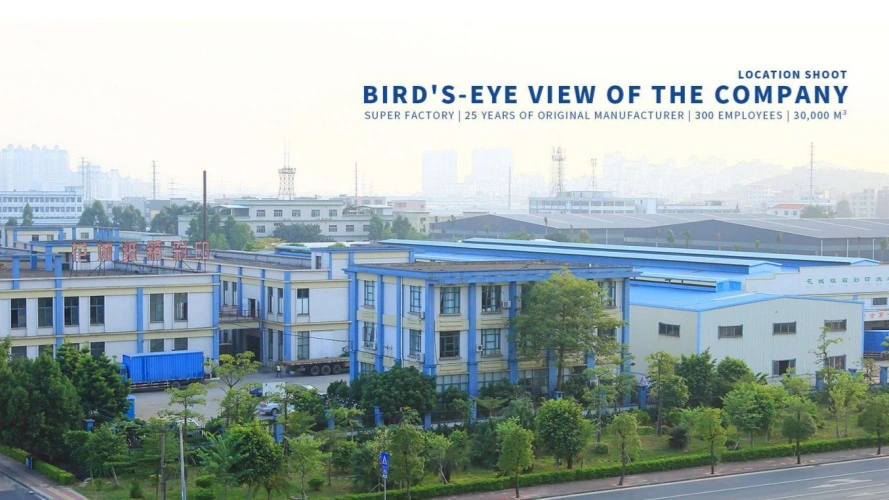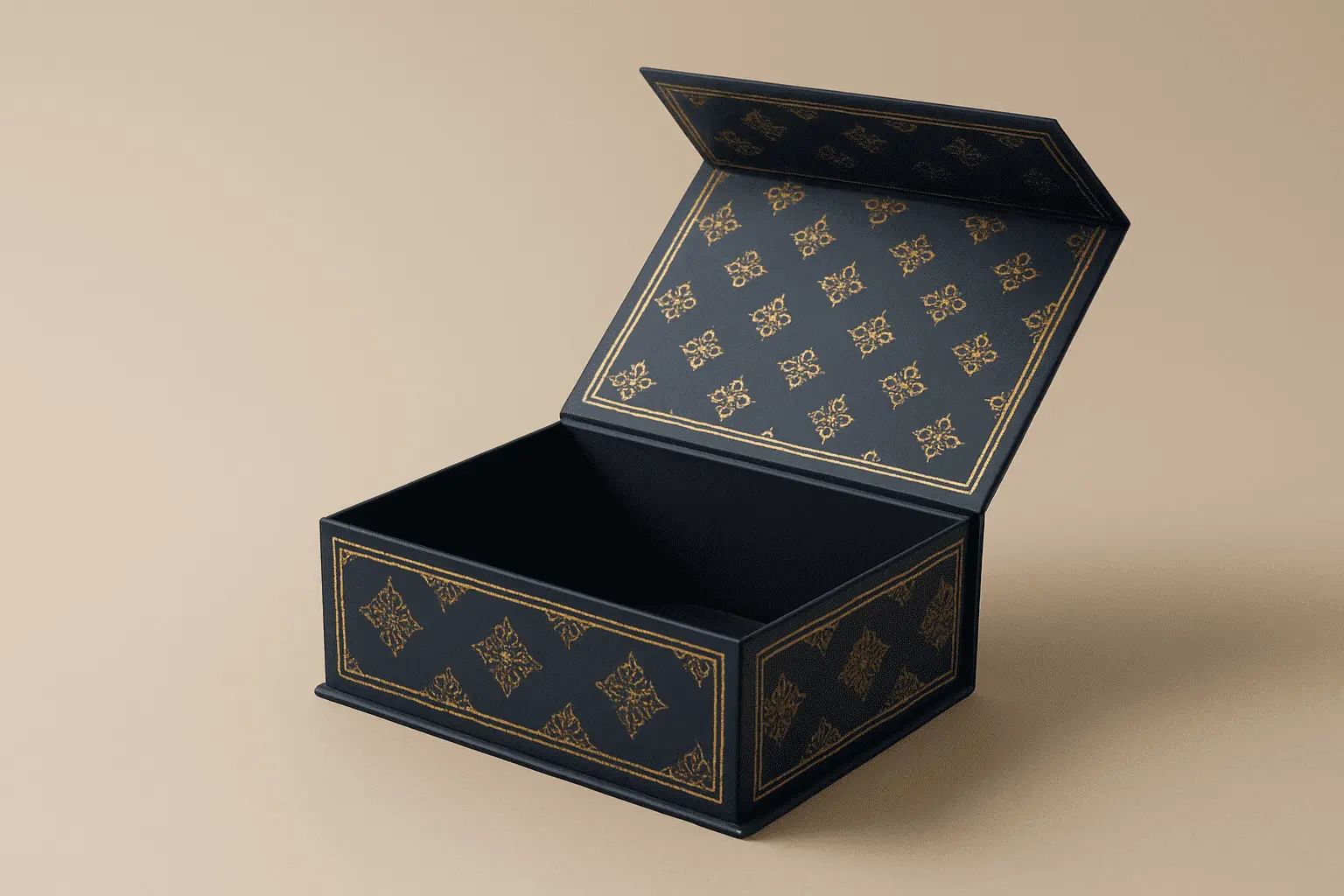Kraft Paper Bags: Eco-Friendly Packaging for Retail and Takeaway
Picture this: a customer walks into your café, orders their favorite meal, and leaves carrying a sleek kraft paper bag that not only holds their food securely but also reflects their environmental values. In today's market, where plastic pollution headlines dominate news cycles and consumers actively seek sustainable alternatives, kraft paper bags have emerged as the superior packaging solution for retail stores and takeaway services. These versatile carriers combine durability, aesthetic appeal, and environmental responsibility—addressing the urgent need for businesses to transition away from harmful plastic packaging while maintaining professional brand presentation and customer satisfaction.

Why Kraft Paper Bags Are the Ultimate Sustainable Packaging Solution?
The shift toward kraft paper bags represents more than a trend—it reflects a fundamental transformation in how businesses approach packaging responsibility. Unlike plastic bags that persist in landfills for centuries, kraft paper bags decompose naturally within weeks when properly disposed of. This biodegradable nature stems from their composition: unbleached wood pulp processed through the kraft pulping method, which preserves the natural strength of cellulose fibers while eliminating harmful chemical treatments. The result is packaging material that delivers exceptional tear resistance and load-bearing capacity without compromising environmental integrity.
What distinguishes kraft paper bags from conventional alternatives is their alignment with circular economy principles. These bags are manufactured from renewable forest resources, and when sourced from FSC-certified suppliers, they guarantee that every tree harvested is replaced through systematic reforestation programs. After use, kraft paper bags can be recycled up to seven times, with each cycle contributing to reduced virgin material consumption and lower carbon emissions. For businesses seeking to demonstrate genuine environmental commitment rather than superficial greenwashing, kraft paper bags provide tangible proof of sustainable operations that resonates with increasingly eco-conscious consumer demographics.
The economic advantages complement the environmental benefits. When purchased through reliable manufacturers, kraft paper bags offer cost-effectiveness that rivals or surpasses plastic alternatives, particularly when considering the growing regulatory landscape. Many jurisdictions now impose taxes or outright bans on single-use plastics, making kraft paper bags not just an ethical choice but a financially prudent one. Furthermore, the premium perception associated with kraft packaging allows businesses to position their products at higher price points—customers willingly pay more for items packaged in materials that reflect shared values regarding planetary stewardship.
Premium Material Options for Every Application
High-Grade Paperboard Selections
The foundation of exceptional kraft paper bags lies in material selection, and understanding the distinct characteristics of available options enables businesses to match packaging precisely to their operational requirements. SBS C1S paperboard offers premium aesthetic appeal with its bright white coated surface, making it ideal for retail environments where visual presentation drives purchasing decisions. This material accepts vibrant CMYK printing and specialty finishes like foil stamping, UV coating, and embossing—transforming simple kraft paper bags into branded marketing assets that enhance shelf appeal and reinforce corporate identity.
For applications requiring dual-sided printing capabilities, SBS C2S delivers uncompromising quality with coating on both surfaces. This material proves particularly valuable for kraft paper bags intended for luxury retail segments, where interior design elements matter as much as exterior branding. The double-sided coating ensures consistent color reproduction and protects printed content from moisture and handling damage, maintaining pristine appearance throughout the product journey from warehouse to consumer hands. Both SBS variants originate from virgin bleached pulp, guaranteeing food-safety compliance and hygienic standards essential for cosmetics, pharmaceuticals, and direct food contact applications.
Sustainable and Cost-Effective Alternatives
CCNB paperboard presents an economical yet environmentally responsible option for businesses balancing budget constraints with sustainability objectives. This material combines a white clay-coated printing surface with a grey recycled fiber back, delivering reliable print quality while incorporating substantial post-consumer content. The recycled composition significantly reduces the environmental footprint compared to virgin fiber products, making CCNB kraft paper bags an excellent choice for brands emphasizing circular economy participation. Despite the recycled content, CCNB maintains adequate rigidity for retail and takeaway applications, supporting moderate weight loads while providing sufficient surface quality for offset and flexographic printing processes.
Brown kraft paper deserves special recognition as the quintessential sustainable packaging material. Its natural, unbleached appearance communicates authenticity and environmental consciousness—qualities that resonate powerfully with organic food retailers, artisanal craft businesses, and brands targeting eco-aware demographics. The visible fiber texture and earthy brown tone create immediate visual differentiation on retail shelves, while the material's inherent strength properties ensure reliable performance even under challenging conditions. Brown kraft paper demonstrates exceptional tear resistance and can be treated for enhanced moisture resistance, making it suitable for bakery products, takeaway meals, and general merchandise. The unbleached production process requires minimal chemical intervention, resulting in lower manufacturing emissions and reduced water consumption compared to bleached alternatives.
Customization Through Advanced Surface Treatments
The versatility of kraft paper bags extends far beyond basic material selection into sophisticated surface finishing techniques that transform functional packaging into memorable brand experiences. Cold and hot foil stamping technologies enable the application of metallic accents that catch light and draw attention in crowded retail environments. These techniques work exceptionally well on kraft paper surfaces, creating striking contrast between natural paper textures and brilliant metallic highlights. Brands can incorporate foil elements into logos, decorative patterns, or call-out messages, adding perceived value without substantially increasing production costs.
UV coating applications provide both protective and aesthetic benefits for kraft paper bags. Spot UV treatments create dimensional effects by applying glossy coating to selected design elements while leaving surrounding areas matte, generating tactile interest that invites consumer interaction. Full UV coating delivers comprehensive surface protection against scratches, moisture, and handling wear, extending the usable lifespan of kraft paper bags and encouraging reuse—a critical factor in maximizing environmental benefits. Embossing and debossing techniques add three-dimensional depth to kraft paper bag designs, creating premium tactile experiences that differentiate products from competitors and reinforce luxury positioning.
Soft-touch lamination represents the pinnacle of surface finishing sophistication, imparting a velvety texture that feels luxurious to hold. This treatment proves particularly effective for high-end retail applications where the unboxing experience significantly influences customer satisfaction and brand perception. The soft-touch finish on kraft paper bags creates memorable sensory engagement that extends far beyond visual impact, fostering emotional connections between consumers and brands. These surface treatments demonstrate that sustainability and premium presentation need not be mutually exclusive—kraft paper bags can deliver both environmental responsibility and exceptional aesthetic appeal when paired with appropriate finishing technologies.
Handle Options Tailored to Brand Identity
Paper-Based Handle Solutions
Handle selection dramatically influences both the functional performance and brand personality expressed through kraft paper bags. Twisted paper handles offer an elegant, eco-conscious solution that maintains material consistency throughout the entire package. Manufactured by tightly braiding multiple kraft paper strands into rope-like cords, these handles provide surprising strength while remaining fully recyclable along with the bag body. The twisted construction creates visual texture and depth, while the ability to dye paper strands enables precise color matching to corporate branding specifications. These handles distribute weight evenly across attachment points, preventing premature failure even when kraft paper bags carry substantial loads.
Die-cut handles represent the most streamlined option, integrating seamlessly with bag structure through precision cutting directly into the top panel. This approach eliminates separate handle materials entirely, resulting in minimalist aesthetics that emphasize clean lines and modern design sensibilities. Die-cut handles work particularly well for smaller kraft paper bags intended for boutique retail or gift applications, where ease of carrying matters less than visual elegance. The integrated construction ensures complete recyclability as a single-material item, maximizing environmental benefits while reducing manufacturing complexity and associated costs.
Premium Textile Handles
Cotton rope handles elevate kraft paper bags into the premium category, combining natural fiber authenticity with superior comfort during extended carrying. The braided cotton construction provides exceptional tensile strength while feeling soft against hands, making these handles ideal for heavier loads or extended shopping experiences. Cotton readily accepts vibrant dyes, enabling manufacturers to offer handles in virtually any color to complement brand palettes or seasonal promotions. The natural textile appearance conveys quality and craftsmanship, reinforcing brand positioning in upscale retail segments where packaging details significantly influence purchasing decisions and customer loyalty.
Satin ribbon handles introduce refined luxury to kraft paper bags, transforming functional packaging into gift-worthy presentation. The glossy surface catches and reflects ambient light, creating visual interest that draws attention even in subdued retail environments. Satin handles feel exceptionally pleasant to hold, with smooth texture that contrasts beautifully against the organic roughness of kraft paper surfaces. These handles excel in applications where kraft paper bags serve dual purposes as both product carriers and gift packaging—eliminating the need for additional wrapping while maintaining elegant presentation. The wide color spectrum available in satin ribbons enables precise aesthetic coordination, while the material's ability to accept printing, embossing, or heat-stamping facilitates subtle brand integration.
Professional Manufacturing and Quality Control
Streamlined Ordering Process
Successful kraft paper bag projects begin with comprehensive demand consultation, where experienced account managers work directly with clients to understand specific packaging requirements, design objectives, and budget parameters. This initial dialogue establishes clear expectations and identifies potential challenges before production commences, minimizing revisions and ensuring efficient project progression. During solution design phases, packaging engineers translate conceptual ideas into technically feasible specifications, considering factors like material selection, structural reinforcement requirements, handle attachment methods, and printing capabilities. This collaborative approach ensures that final kraft paper bags meet both aesthetic aspirations and functional performance standards.
Professional implementation proceeds through detailed sampling, where prototype kraft paper bags are manufactured according to agreed specifications for client evaluation. This critical step allows businesses to assess actual materials, colors, structural integrity, and overall quality before committing to full production runs. Sample review often reveals minor adjustments needed for optimal results—handle positioning modifications, color calibration refinements, or structural reinforcements—that can be addressed efficiently at small scale rather than after thousands of units have been produced. Upon sample approval and deposit payment, orders transition into full-scale manufacturing, where established quality protocols ensure consistency across every kraft paper bag produced.
Advanced Production Capabilities
Modern kraft paper bag manufacturing leverages sophisticated printing technologies to achieve exceptional visual results. Offset printing delivers photo-quality reproduction with smooth gradients and fine detail, while digital printing enables economical short runs and variable data integration for personalized packaging. Flexographic printing excels for large-volume production, offering rapid speeds and cost efficiency without compromising color vibrancy or registration accuracy. Surface finishing follows printing, where coatings and varnishes are applied to protect artwork while enhancing visual appeal—matte finishes provide subtle sophistication, gloss coatings amplify color intensity, and specialty treatments like soft-touch lamination create distinctive tactile experiences.
Lamination processes bond printed sheets to heavier substrates when additional structural strength is required for kraft paper bags carrying heavier products or demanding extended durability. Die-cutting employs precision metal dies to cut bag shapes, create windows for product visibility, or trim edges with exacting accuracy—ensuring consistent dimensions across production runs. Gluing and assembly operations fold and bond die-cut components into finished kraft paper bags, with automated equipment maintaining speed and precision while manual operations handle complex structures requiring skilled craftsmanship. Final packing and shipping stages protect completed kraft paper bags during transit, with appropriate bundling, cartoning, and palletization ensuring products arrive in pristine condition ready for immediate deployment.
Color Precision Through Professional Printing Systems
CMYK printing forms the foundation of full-color kraft paper bag decoration, utilizing cyan, magenta, yellow, and black ink combinations to reproduce virtually any hue or photographic image. This four-color process delivers cost-efficient results for designs incorporating multiple colors, gradients, or photographic elements, making it the preferred choice for kraft paper bags featuring complex artwork or product photography. The subtractive color model works by overlaying transparent inks in varying densities, creating perceived colors through light absorption and reflection. Modern CMYK printing on kraft paper achieves remarkable accuracy when paired with proper color management protocols and G7 calibration standards—ensuring that printed colors match digital proofs and maintain consistency across repeat orders.
Pantone Matching System printing addresses applications demanding absolute color fidelity, such as corporate logos or brand identity elements that must appear identical across all marketing materials. PMS inks are premixed to exact formulas rather than created through overlaying process colors, delivering solid, uniform hues without screening patterns or color variation. The Pantone library encompasses thousands of standardized colors, including specialty metallic and fluorescent options unavailable through CMYK processes. For kraft paper bags serving as brand ambassadors, Pantone printing ensures that signature colors remain instantly recognizable and perfectly consistent—critical factors in building visual brand equity and consumer recognition across diverse retail environments and repeated purchasing cycles.
Conclusion
Kraft paper bags represent the convergence of environmental responsibility, functional excellence, and brand expression—delivering sustainable packaging solutions that satisfy consumer expectations while supporting business objectives across retail and takeaway sectors.
Cooperate with GUANGZHOU FETCHING COLOR PRINTING & PACKAGING LTD.
Partner with a China kraft paper bag manufacturer that combines 25 years of expertise with cutting-edge technology. GUANGZHOU FETCHING COLOR PRINTING & PACKAGING LTD. operates a 50,000㎡ facility housing advanced Heidelberg and KBA printing equipment, serving over 1,000 satisfied clients across food, cosmetics, and retail industries. Our certifications—ISO9001, ISO14001, FSC, G7, and Disney—guarantee quality and environmental compliance. As your trusted China kraft paper bag supplier and China kraft paper bag wholesale partner, we offer High Quality kraft paper bags with competitive kraft paper bag prices. From concept through delivery, our R&D team provides comprehensive support for structure development and surface treatments. Find premium kraft paper bags for sale through our streamlined ordering process. Contact us at public@fetchingprinting.com to discuss your packaging requirements and receive samples. Your packaging success starts here.
References
1. Lewis, Helen; Gertsakis, John; Grant, Tim; Morelli, Nicola; Sweatman, Andrew. Design + Environment: A Global Guide to Designing Greener Goods. Greenleaf Publishing, 2001.
2. Emblem, Anne; Emblem, Henry. Packaging Technology: Fundamentals, Materials and Processes. Woodhead Publishing Limited, 2012.
3. Twede, Diana; Selke, Susan E.M.; Kamdem, Dieudonne-Paul; Shires, David. Cartons, Crates and Corrugated Board: Handbook of Paper and Wood Packaging Technology. DEStech Publications Inc., 2014.
4. Robertson, Gordon L. Food Packaging: Principles and Practice (Third Edition). CRC Press, 2013.

Based on your location and order quantity, you will have the opportunity to receive a limited time free shipping promotion!

Corporate Purpose
